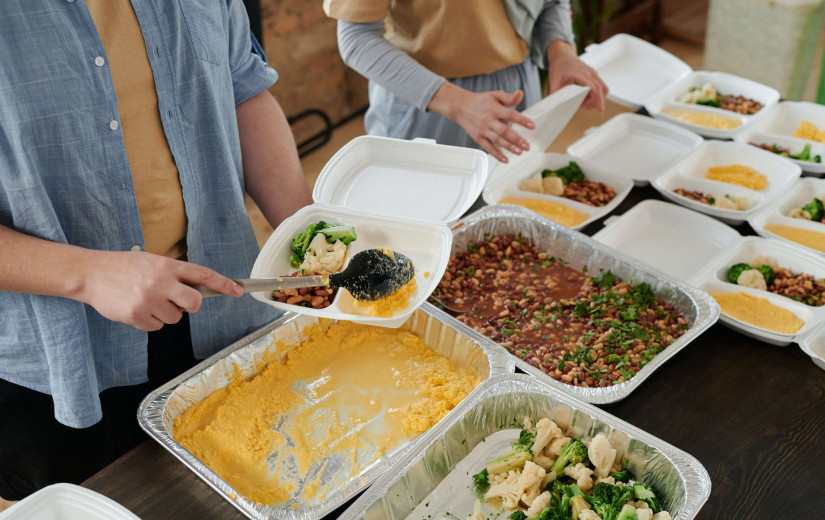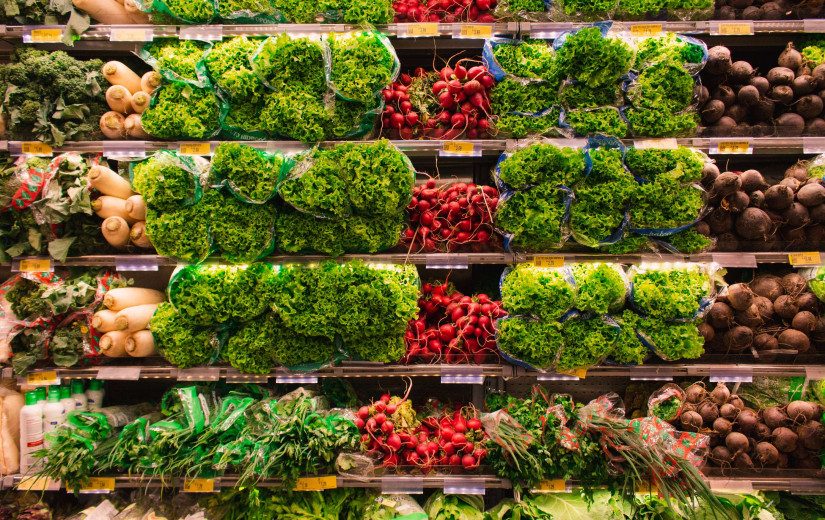Guidelines To The Supplemental Nutrition Assistance Program (SNAP)
The Supplemental Nutrition Assistance Program (SNAP) came into existence out of a desire to fight hunger in the U.S. With the help of the SNAP program, it's been estimated that well over 45,000,000 (45 million) people from all across the US avoided starvation and malnourishment. The SNAP food benefits program helps out all peoples, with a 25% chunk of beneficiaries being elderly disabled, and 70% going to households that have children. Though SNAP is a federally funded government program, it is up to the state to actually administer each family's benefits. The state is always responsible for paying half of the operational costs that is required to administer all of the benefits.
Who Can Receive SNAP Benefits?
The SNAP benefits program is unique in that it was specially designed to be a viable option for any family that can be defined as a low-income household. Though the basic requirements to receive benefits from SNAP is set by the United States federal government, each state is allowed to alter or bend rules a little in order to make sure they can provide assistance for unique and undefined situations. Having said that, there are only 3 required criteria that each family has to meet in order to gain SNAP benefits:
There are financial limitations. A family of 3's total income cannot be more than $2,177 per month in order to receive SNAP benefits. This amount was 130% of the poverty line just last year (2016.) As of 2016, a household of 3 should have a net income that is below or at $1,675/month. This means that the income they keep after deducting things like child care expenses and housing costs, they would need to have $1,675 or less. It should be noted that households with disabled or elderly members may not be subjected to the same or any financial requirements. There are other types of requirements that a household must meet in order to gain SNAP benefits. For example, there is an asset limit for households. For most households, the limit is $2,250. For households with disabled or elderly members, the limit is $3,250. Lastly, it is important to note that most strikers, undocumented immigrants, and college students do not qualify for SNAP benefits, regardless of what their household incomes and asset amounts are.
As a general rule, someone who is unemployed and has no children can receive SNAP benefits for only 3 months. However, the state may continue to provide benefits to unemployed persons for longer than 3 months if they have unusually high, sustained unemployment rates. Some unemployed people may even be able to keep their benefits if they can prove that they are receiving job training or working a minimum of 20 hours a week. These rules came into effect due to the recession in 2008, when many states had waivers that granted permission for the extension of benefits for people who were unemployed and children. Currently, 40 states are considering elimenating this extention. This means that anywhere from 500k to 1 million individuals will lose SNAP benefits.
How Does Applying for SNAP Benefits Work?
Though each state has its own unique process, guidelines set forth by the federal government still have to be followed. Families in need can apply for SNAP in many ways. They may drop by their local welfare office, fax in their forms, send their forms in by mail, or even apply for SNAP benefits online. However a family chooses to apply, they will still need to go through an interviewing process to determine their eligibility.
Once a family is approved for SNAP benefits, they will receive an EBT or electronic benefit transfer card. When the card arrives, the family will receive a predetermined amount of money once a month. SNAP benefits may be used at many stores and locations, as long as they're registered with the SNAP program. In fact, over 261k stores across the nation are EBT authorized. Having said that, most people use their EBT cards at supermarkets. You can only spend SNAP benefits to buy food products, with the exception of hot, pre-prepared foods. You cannot use EBT to purchase non-food items, nutritional supplements, cigarettes, or alcohol. In some stores, you may also use SNAP benefits to purchase food seeds to help further aid your family's nutritional requirements.
To continue to receive your benefits, you will be asked to reapply every six to twelve months. The elderly and disable need only apply every one or two years. It is also required that you report any significant financial changes to your benefits office right away.
How Much Can the Average Family Expect to Get from the SNAP Program?
In 2016, the average family received SNAP benefits that totaled $127 per month. Having said this, the amount you may receive will differ based on your individual needs and household situations. Typically, households with lower income will get a higher amount of benefits each month. This is to ensure that every family meets the Thrifty Food Plan standards set forth by the USDA.
SNAP benefits are calculated using a formula. This formula assumes that almost all households spend roughly 30% of their net income to purchase food. Using this as a basis, the benefits program adds a little extra to ensure that the household meets the Thrifty Food Plan outlines. This is why a household with no income will receive the entirety of the cost of the Thrifty Food Plan. A household that has any sort of income will still get the whole cost of the Thrifty Food Plan, but they will have 30% subtracted from what their overall net income is.
Who Can Receive SNAP Benefits?
The SNAP benefits program is unique in that it was specially designed to be a viable option for any family that can be defined as a low-income household. Though the basic requirements to receive benefits from SNAP is set by the United States federal government, each state is allowed to alter or bend rules a little in order to make sure they can provide assistance for unique and undefined situations. Having said that, there are only 3 required criteria that each family has to meet in order to gain SNAP benefits:
There are financial limitations. A family of 3's total income cannot be more than $2,177 per month in order to receive SNAP benefits. This amount was 130% of the poverty line just last year (2016.) As of 2016, a household of 3 should have a net income that is below or at $1,675/month. This means that the income they keep after deducting things like child care expenses and housing costs, they would need to have $1,675 or less. It should be noted that households with disabled or elderly members may not be subjected to the same or any financial requirements. There are other types of requirements that a household must meet in order to gain SNAP benefits. For example, there is an asset limit for households. For most households, the limit is $2,250. For households with disabled or elderly members, the limit is $3,250. Lastly, it is important to note that most strikers, undocumented immigrants, and college students do not qualify for SNAP benefits, regardless of what their household incomes and asset amounts are.
As a general rule, someone who is unemployed and has no children can receive SNAP benefits for only 3 months. However, the state may continue to provide benefits to unemployed persons for longer than 3 months if they have unusually high, sustained unemployment rates. Some unemployed people may even be able to keep their benefits if they can prove that they are receiving job training or working a minimum of 20 hours a week. These rules came into effect due to the recession in 2008, when many states had waivers that granted permission for the extension of benefits for people who were unemployed and children. Currently, 40 states are considering elimenating this extention. This means that anywhere from 500k to 1 million individuals will lose SNAP benefits.
How Does Applying for SNAP Benefits Work?
Though each state has its own unique process, guidelines set forth by the federal government still have to be followed. Families in need can apply for SNAP in many ways. They may drop by their local welfare office, fax in their forms, send their forms in by mail, or even apply for SNAP benefits online. However a family chooses to apply, they will still need to go through an interviewing process to determine their eligibility.
Once a family is approved for SNAP benefits, they will receive an EBT or electronic benefit transfer card. When the card arrives, the family will receive a predetermined amount of money once a month. SNAP benefits may be used at many stores and locations, as long as they're registered with the SNAP program. In fact, over 261k stores across the nation are EBT authorized. Having said that, most people use their EBT cards at supermarkets. You can only spend SNAP benefits to buy food products, with the exception of hot, pre-prepared foods. You cannot use EBT to purchase non-food items, nutritional supplements, cigarettes, or alcohol. In some stores, you may also use SNAP benefits to purchase food seeds to help further aid your family's nutritional requirements.
To continue to receive your benefits, you will be asked to reapply every six to twelve months. The elderly and disable need only apply every one or two years. It is also required that you report any significant financial changes to your benefits office right away.
How Much Can the Average Family Expect to Get from the SNAP Program?
In 2016, the average family received SNAP benefits that totaled $127 per month. Having said this, the amount you may receive will differ based on your individual needs and household situations. Typically, households with lower income will get a higher amount of benefits each month. This is to ensure that every family meets the Thrifty Food Plan standards set forth by the USDA.
SNAP benefits are calculated using a formula. This formula assumes that almost all households spend roughly 30% of their net income to purchase food. Using this as a basis, the benefits program adds a little extra to ensure that the household meets the Thrifty Food Plan outlines. This is why a household with no income will receive the entirety of the cost of the Thrifty Food Plan. A household that has any sort of income will still get the whole cost of the Thrifty Food Plan, but they will have 30% subtracted from what their overall net income is.

















